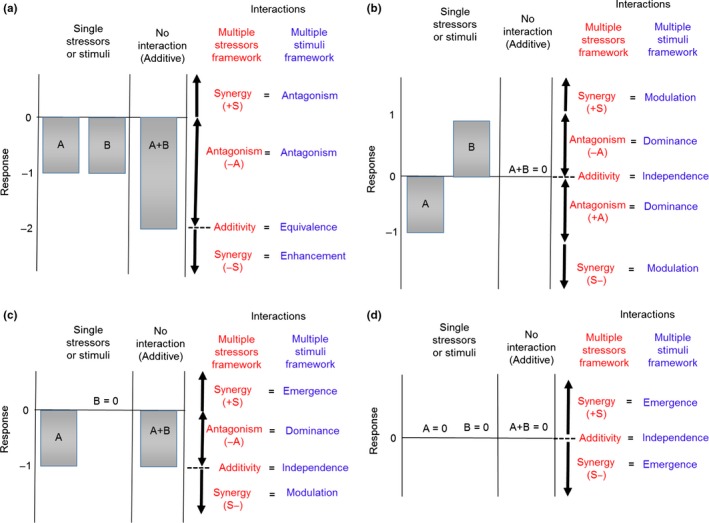Figure 1.

A conceptual framework for classifying behavioral response to multiple stressors based on the direction and magnitude of their individual and interactive effects. The plots show the four main ways that animals can respond to two stressors, when: (a) both have significant effects in the same direction, (b) both have significant effects in different directions, (c) one causes a significant effect but the other no response, and (d) when both have no significant response. The gray bars show the response to each stressor, and the expected value of the response when there is no interaction (i.e., effects are additive). The red text illustrates how interactions would be classified following Piggott et al. (2015b) based on calculations of effect sizes for individual and interactive effects and their associated 95% confidence intervals. Blue text illustrates how interactions would be classified following Munoz & Blumstein (2012). The integration of these two schemes is based on the six conditions in Table 1. Table S1 outlines classifications for all interaction types (e.g., when the individual effects of A and B shown in (a) are both positive rather than negative)
